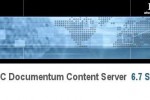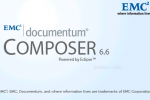![]() xCP 1.x compatible
xCP 1.x compatible
futher information: short tutorial: use adaptors in Forms Builder
Data adaptors are a powerful tool to create individual and dynamical forms and taskspace tabs. The data source adaptor includes data from the repository via DQL or values from SQL or JDBC (Java Database Connectivity).
| Adaptor Type | Description |
|---|---|
| Item Initializer | entered a value in a field automatically. Default: current date/time in a date in a time or date field. |
| Item Validator | validate a user’s input values on individual fields. Default: adaptor validates string inputs against the current repository by searching for them in the list returned by a DQL query or a default string (example: “@”) |
| Document Validator | validate an entire form template |
| Data Source | include external information into template further information can be found in Class Name section |
| Data Source Set Value | automatically populate one field on the template by two types of setting adaptors values: on Change or on Init |
| Document Processor – Initialization | An initialization adaptor initializes values for the entire form. |
| Document Processor – Pre-submission | A pre-submission adaptor executes prior to form submission provided the validation succeeds, then the form is saved. |
| Document Processor – Post-submission | A post-submission adaptor executes after a form is submitted. |
Create Data Adaptors

Adaptor Configuration Manager

Installed adaptors
add a new adaptor (Global Adaptors if the functionality should be available for more than one form template).
Gerneral
Adaptor Type (table 1 on this page)
Name: the individual name of your new created adaptor
Description: a short description of the functionality or requirements
Implementation
Class Name:
DataSourceAdaptorService to connect a repository via DQL
JDBCDataSourceAdaptor to connect to SQL or external DQL Server
PropertiesDataSourceAdaptor to include data from a properties file
Type:
Java Class (a Java Class is easy to validate or to debug, if your adaptor is not very complex you can use SBO per default)
service-based business object (SBO) based on EMC’s Business Object Framework (BOF)
Initial parameter:
dql or sql
returns the last five active users (last_login_utc_time): select user_name, last_login_utc_time from dm_user WHERE user_os_name not like 'dm%' AND user_name = SUBSTR( default_folder,2,20)ORDER BY last_login_utc_time DESC ENABLE(RETURN_TOP 5)
Input:
The individual value to fulfill the main query. Not usesd in this example.
Output type:

futher information: short tutorial: use adaptors in Forms Builder














